16 Varieties of Vines That Grow on Trees (with Pictures)
-
Ed Malaker
- Last updated:

Vines are interesting plants that can grow along the ground or climb an object like a fence or tree. Some varieties are attractive, producing colorful flowers, while others are invasive or poisonous. If you are interested in the different kinds of vines that grow on trees, keep reading as we provide you with a list of the most popular varieties.
The 16 Varieties of Vines That Grow on Trees
1. Bignonia Capreolata
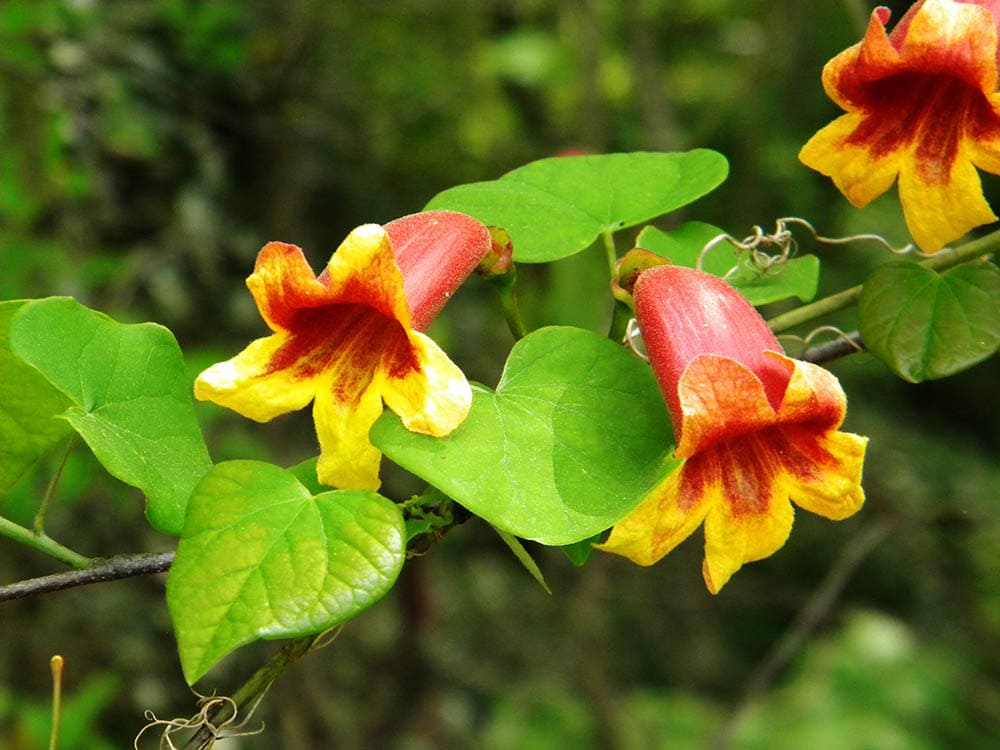
| Hardiness Zones: | 5–9 |
Many people call the Bignonia Capreolata a Crossvine because the stem has a cross pattern when you cut it. It produces long red and yellow tubular flowers that smell like mocha in the spring, which many people enjoy. This variety also has several traditional medicinal uses that date back to Indigenous tribes.
2. Boston Ivy

| Hardiness Zones: | 4–9 |
Boston Ivy is a popular option because it creates a vine that produces bright fall colors of scarlet and purple that are quite attractive in any landscape. However, it can damage trees, wood siding, gutters, and more due to its strong grip, so you will need to be careful if you grow it and when you try to remove it.
3. Butterfly Vine
| Hardiness Zones: | 8–10 |
The Butterfly Vine is a great choice for hot environments. It’s a large vine that produces clusters of yellow flowers in late spring that will help make any landscape more attractive, and the name suggests that they are likely to attract butterflies.
4. Chaparral Dodder
| Hardiness Zones: | 8–10 |
The Chaparral Dodder has several nicknames, including California Dodder, which indicates where you might find this attractive vine. It’s a parasitic plant that looks like strands of spaghetti scattered about, and it can get all of its nutrients from its host plant without killing it, making it a better choice than many other options. However, it only grows well in warm environments.
5. Clematis
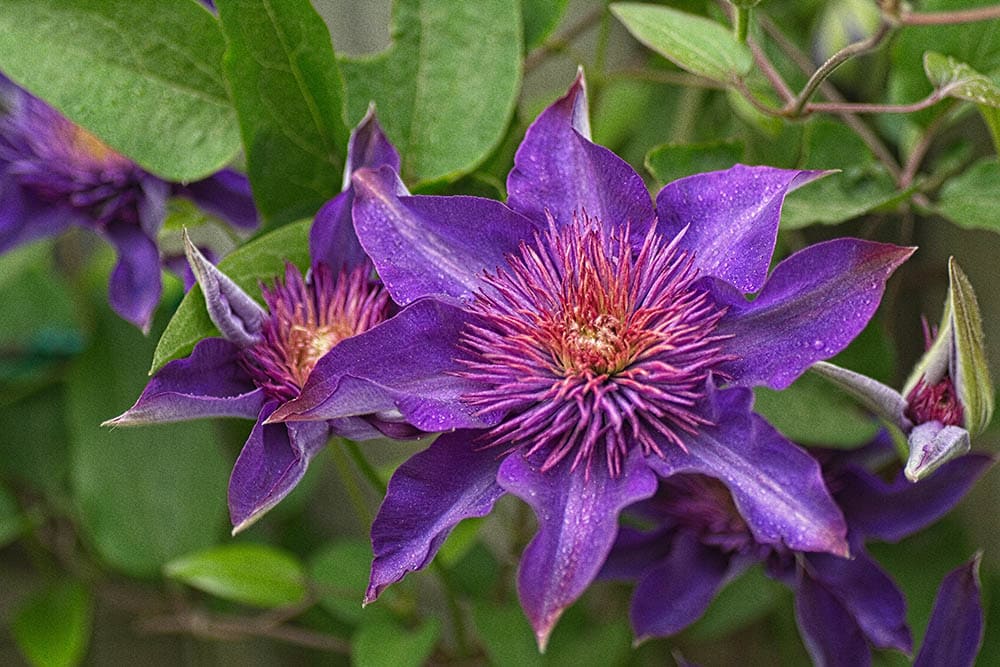
| Hardiness Zones: | 4–9 |
Clematis is a vine in the buttercup family. It produces attractive flowers that can be any of several colors, as there are many varieties. It’s a fast-growing plant that will curl around structures as it climbs, and it grows best in a cool area with well-drained soil and plenty of sunlight, making it a good choice for gardens.
6. Cuscuta Campestres
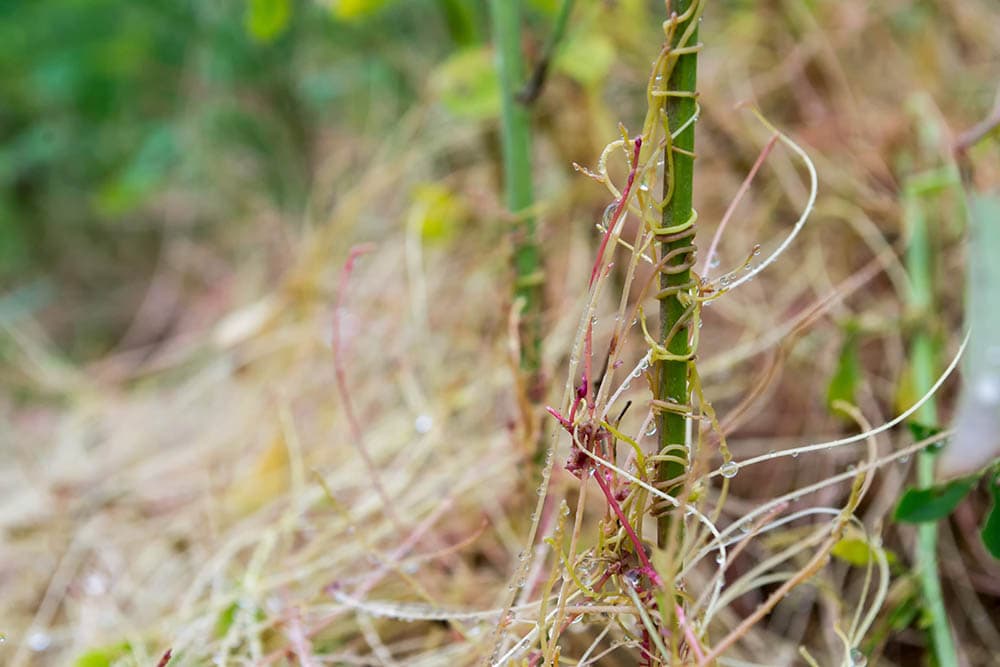
| Hardiness Zones: | 4–9 |
The Cuscuta Campestres is an invasive plant that depends on its host for all its nutrition. It can form a dense canopy over its host and will easily spread from plant to plant until it affects a large area. Though it looks nice, you will need to take action if you see it, in order to prevent it from spreading, as it grows quickly.
7. Cuscuta Gronovii
| Hardiness Zones: | 4–9 |
The Cuscuta Gronovii is a yellow-orange invasive vine similar to the Cuscuta Campestres. It produces small white flowers that can be quite attractive, but the vine will entangle itself around the host, damaging or even killing it.
8. Cuscuta Reflexa
| Hardiness Zones: | 4–9 |
The Cuscuta Reflexa looks like yellow straw or silly string tightly wrapped around its host. It acquires its nutrients from the tree branches and will eventually kill it. The leaves are small and resemble scales, and the vine won’t produce any fruit or flowers.
9. English Ivy
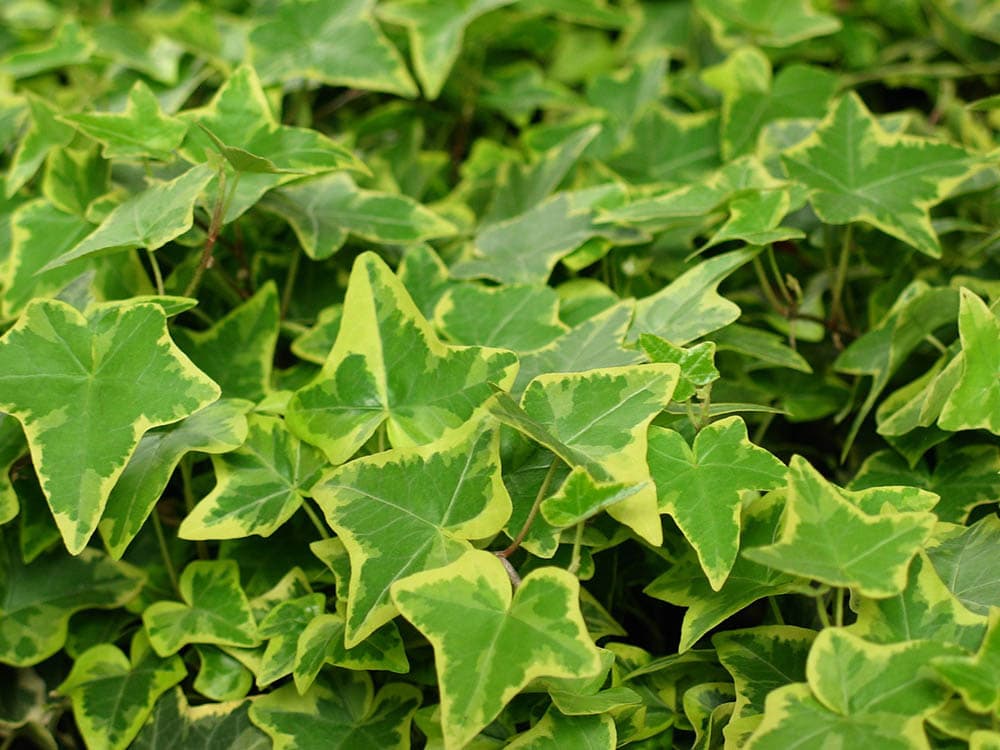
| Hardiness Zones: | 4–9 |
English Ivy is a variety that can grow as high as 80 feet and wide as 50 feet. It produces flowers in the fall and dark-colored berries that can last throughout the winter. It’s perfect for providing thick ground cover or decorating fences and trees.
10. Japanese Honeysuckle
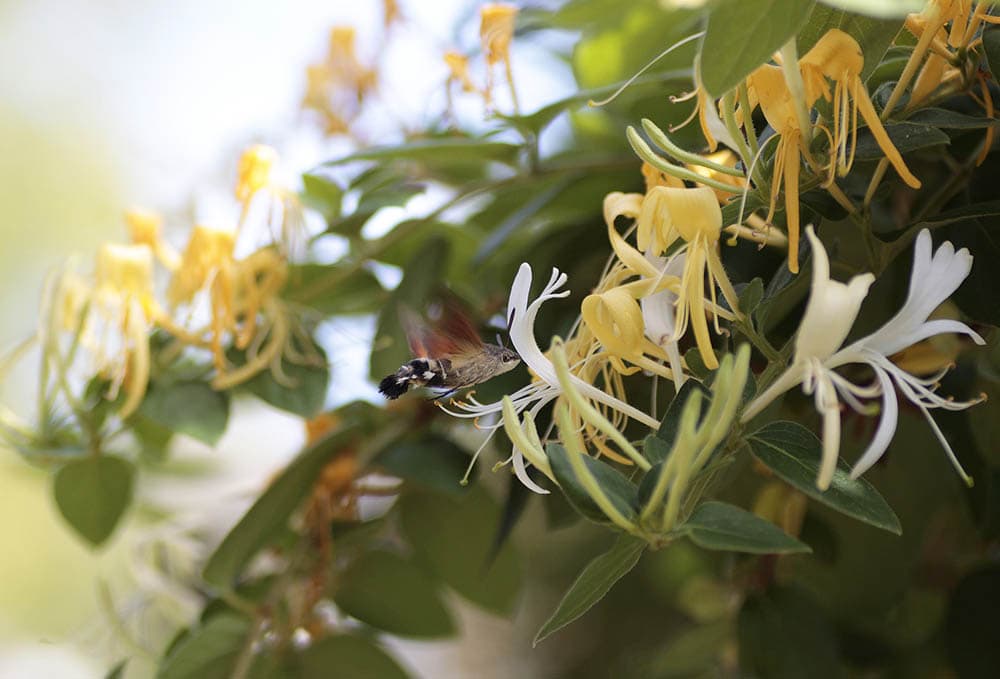
| Hardiness Zones: | 4–9 |
Japanese Honeysuckle is an aggressively growing plant that produces attractive yellow flowers and food for birds through its dark berries. However, this vine can also smother low-growing plants and push out other native plants.
11. Mistletoe
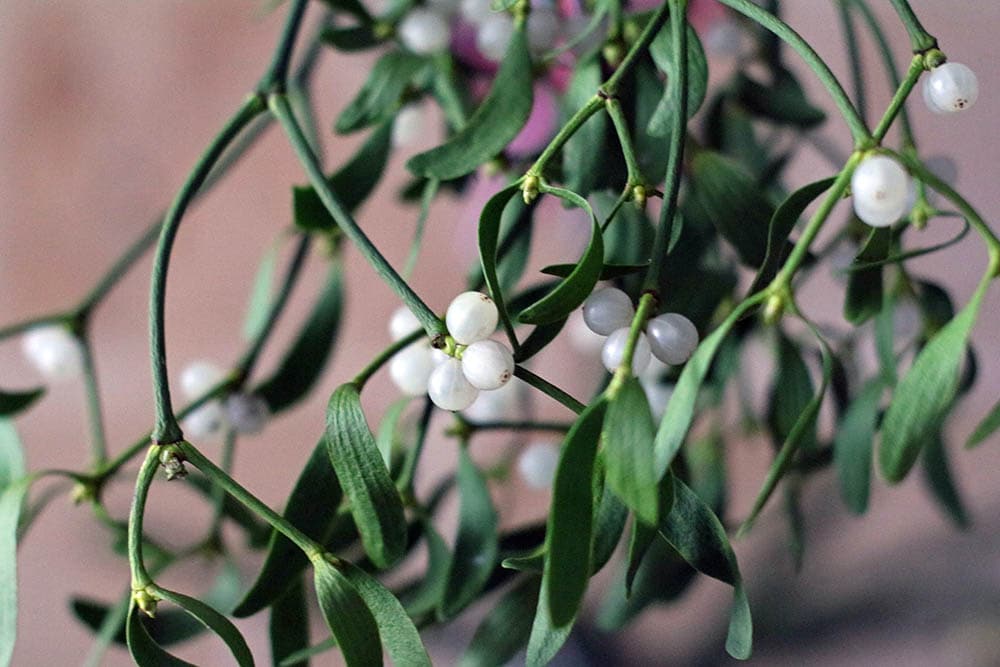
| Hardiness Zones: | 5–9 |
The Mistletoe Vine is one of the most popular parasitic plants in the world, and you will often see it during the holidays. It attaches to a host tree or shrub and extracts water and nutrients. It has no roots but can remain green all year and will even produce fruit during the winter.
12. Passiflora

| Hardiness Zones: | 6–10 |
Passiflora is a variety that produces attractive flowers with a distinctive corona that ripens into numerous seeds. You can easily find this plant in Mexico and Central America, but it can also grow well beyond its native range. It’s also good for attracting butterflies, hummingbirds, and pollinating bees.
13. Poison Ivy
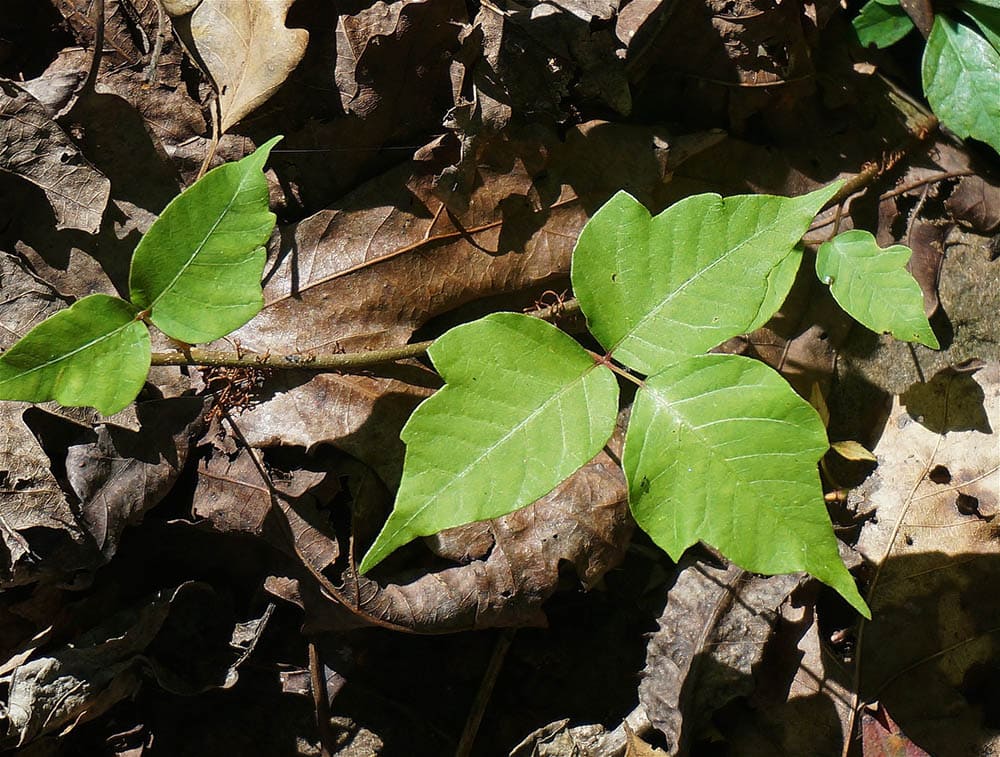
| Hardiness Zones: | 3–10 |
Poison ivy is a tree-growing vine that produces dense clusters of off-white berries from late summer into fall. The leaves turn red in autumn, and the surface gets shiny with age. Touching this plant causes a severe reaction in most people that can last several days.
14. Scaldweed
| Hardiness Zones: | 4–9 |
Scaldweed is a climbing vine native to Canada. It has broad leaves and produces colorful flowers in the late spring. It can often grow as tall as 15 feet and inserts suckers into the host plant to gather nutrients. When it matures, the roots die, and it will live entirely off the host.
15. Vanilla Pompona
| Hardiness Zones: | 10–11 |
The Vanilla Pompona vine is a succulent plant resistant to drought, making it a good choice for drier climates. It has thick green leaves and produces attractive long yellow flowers. Plant this variety in bright sunlight for the best results.
16. Wisteria Vine
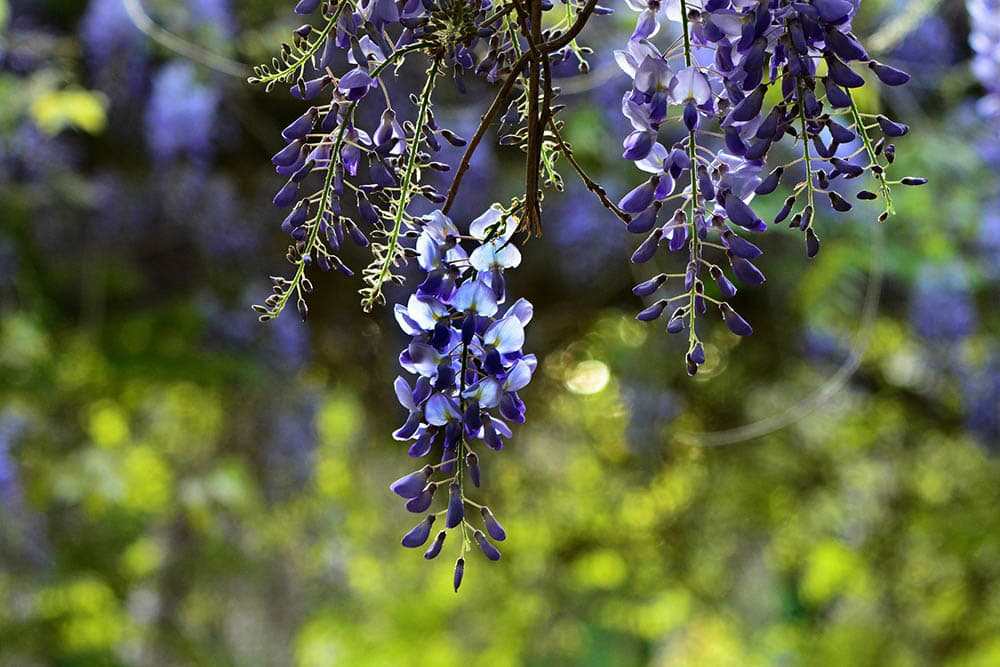
| Hardiness Zones: | 5–8 |
The Wisteria Vine is an extremely attractive variety that produces pea-like flowers that grow in large clusters and hang down like a pendulum. The flowers are pink, blue, and purple, and people often use them for decorative purposes.
Tips for Growing Vines
- A drip system can help provide consistent water to your climbing vine.
- Adding 1 to 3 inches of mulch around the base will help prevent weeds from growing while your vine establishes itself.
- Fertilize new plants when you plant them.
- Fertilize established plants each year early in the growing season.
- Periodically thin out tangling vines like honeysuckle, so it doesn’t strangle the host.
- Prune when the plant is dormant for best results
- Cut back unwanted growth as soon as you see it, especially if it’s moving in an undesirable direction.
Summary
Several varieties of vines grow on trees, many of which can look attractive, producing colorful flowers. Unfortunately, many of them will create a thick canopy over the plant, causing damage that can eventually result in the host’s death. If you have vines growing on your property, you’ll need to stay vigilant to keep them from spreading uncontrollably.
Featured Image Credit: Hans, Pixabay
Contents
